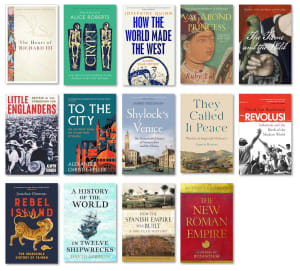The world’s oldest bum print can be found in Tuc d’Audoubert cave, in Ariège, France.
A team of archaeologists and skilled trackers, interpreting footprints on the cave floor that had been undisturbed for millennia, were able to reconstruct the precise moment that the bottom mark was impressed on the muddy surface...
Getting to the bottom of it
Approximately 17,000 years ago, two adults, one male and one female, were walking fast through the cave, heading for the exit. Just at the point of a sharp bend, the man’s left foot slipped. The sudden change in his centre of gravity, combined with the momentum he had accrued, resulted in his torso descending rapidly. The full weight of the man’s upper body drove his buttocks forcefully downwards onto the cave floor, cracking the fragile mud surface layer and leaving (for posterity) the world’s oldest butt cheek impressions.1
According to the archaeological report the man may or may not have been wearing underpants:
...no statement could be made about the buttocks regarding clothing
Episodes of Magdalenian Hunter-Gatherers in the Upper Gallery of Tuc d’Audoubert (Ariège, France).
I came across this remarkable piece of archaeological detective work, in Footmarks: A Journey into Our Restless Past by Jim Leary.
On the move
The idea behind Jim Leary’s book is that when we look at the past we tend to see a series of static sites: Stonehenge, Pompei and the like, frozen in time but also frozen in space.
Leary’s big thing is that it is the movements of people that make the past come to life. By examining traces of motion we get a much more immediate sense of how people lived their lives. Not least because we can ourselves recreate their journeys or footsteps across a landscape, by just going for a walk. As Leary puts it:
By shifting our focus to the way people moved, we infuse the past with the dynamism and vital force it once contained, letting it live in the present.
Footmarks, Jim Leary
Paths through time
The book starts at a small scale, with the oldest human footprints from 3.66 million years ago in the Olduvai Gorge in Tanzania. These show three people, one large, one medium, one small. The smallest person limped alongside the larger one, while the middle person walked behind, carefully stepping in the footsteps of the largest. Their footprints - the earliest direct evidence of humans walking - were impressed upon the recently fallen volcanic ash from a nearby eruption.
It then moves on to more recent footmarks, such as the ones from Tuc d’Audoubert cave above, where the ancient bumprint was recorded, and looks at how the alignment of ancient monuments might indicate how people moved about in prehistoric times (no evidence for using the Ridgeways apparently).
As the book progresses the pathways scale up, to drovers tracks, to roads, until finally we look at voyages across the sea.
A personal journey
Footmarks is an intimate book, and Leary shares some of his personal difficulties such as bereavement or just finding it difficult to cope. I really appreciated this openness. As an aside to the “history” in the book, by setting out his own struggles so matter of factly it helps everyone else reading it to feel more normal when they encounter their own issues. Life’s journey is rarely a smooth one even if it may appear so on the outside.
While the idea behind the book and the personality of the author appealed to me, I found reading it to be a bit of a mixed bag.
A bit of everything
I think the reason for this is that in my mind an archaeologist is someone who peers back at prehistory and the further back the better. Whereas in reality an archaeologist can be interested in anything they can dig up or find out. The practical implication of this is that Leary ranges far and wide as he looks for anecdotes to illustrate a point.
For example in a chapter on restrictions to movement (and resistance to those restrictions) he leaps from Enclosure in 18th Century England, to Offa’s Dyke, to Checkpoint Charlie, to the concept of the flaneur (italics essential), psychogeography, Gandhi and his march against the salt tax, a mass trespass at Kinder Scout in 1930s UK and finally the Occupy movement in 2011. All this in 15 pages.
This passage is perhaps one of the most scattergun but many of the chapters felt like a bit of a hodgepodge of random titbits chosen to garnish a topic.
Drawing in the readers
That said the intention of Leary is to draw ordinary people in, not just the archaeology buffs - and he succeeds here with readable prose and by breaking down the book into short chapters. The book as a whole is not intimidatingly long and has some nice woodcut style pictures at the start of each section.
Liminal count 🪨🪨🪨
I’ve deducted a few marks though for the “liminal” count which comes in at 32.
Conclusion
The idea of studying movement in the past strongly appeals to me. But much of the book was too meandering for my tastes.
Alongside the duff notes though there were passages that have left a lasting impression - such as the three ancient travellers crossing a field of volcanic ash at the dawn of mankind, a child skipping across the mudflats of the North Sea a million years ago, and those two groundbreaking ice age butt marks in the mud of the cave floor.
I was keen to verify this claim - and have a look at the ancient bum print - so I did a bit of googling to track down the sources. Here are the links to the photos of the cave floor with bottom impression. If you look carefully and read the accompanying text it all seems very credible. The full archaeological report that found the buttock prints is published as an open access paper. Amazingly it hasn’t yet gone viral. ↩︎
Counting the number of times the word “liminal” is used (or its derivations) is my objective test for the overall jargon level. I believe all non specialist archaeology books should aim for a score of zero because the obscure word “liminal” can in all cases be replaced by the normal word “boundary” 🙂. ↩︎
Book details
(back to top)- Title -
Footmarks : A Journey into Our Restless Past
- Author -
Jim Leary
- Publication date -
July 2023
- Publisher -
Icon Books
- Pages -
304
- ISBN 13 -
978-1837730247
- Podcast episode -
Talk Radio Europe: Jim Leary – Footmarks A Journey Into our Restless Past…with TRE’s Giles Brown
- Amazon UK -
- Amazon US -



